Saturday, 10 August 2024, 9.38am. This was the moment my life changed.
Fifteen hours earlier, my partner, Nick, and I had landed in Rome. After our first night in Trastevere, we were rested, recharged, and ready to explore all this historic city had to offer.
Of course, a famed Italian breakfast and espresso were at the forefront of our minds. And this, my friend, is where our story begins.
9.03 am – Nick and I were sitting outside, indulging in a traditional Italian breakfast consisting of cornetto, tramezzini, and espresso at Bar San Calisto – a local Roman institution that opened in the 1960s, enthusiastically endorsed by locals and Stanley Tucci alike.
9.26 am - Not being known for my restraint when it comes to eating – especially when I’m on holidays - I insisted we have just one more treat from the bar. Nick agreed.
9.28 am - Browsing the pastry cabinet filled with baked treasures, an unassuming sugar-glazed sweet bun caught my eye. I could never have anticipated the profound experience to follow.
9.31 am - Happy with my choice, I ordered the bun only to see it whisked to the other side of the bar. I watched, befuddled, as my bun made its journey from the tongs of the gentleman working the register to a lady in the kitchen.
9.32 am - In a blink-and-you’d-miss-it flick of her wrist, my bun was sliced down the middle. What came next was one of the most beautiful surprises I have witnessed in my 39 years on this Earth. Lashings of cloud-like whipped cream were slathered into the bun, which was then handed to me on an unassuming plate, complete with a paper doily. I didn’t know it four minutes earlier, but I had ordered the famed Italian cream-filled brioche-style bun, the Maritozzo.
9.34 am – I returned to our tiny table giddy with excitement and proudly announced my accidental yet monumental success to Nick. To say he too was elated is an understatement. After taking the obligatory photos and cinematic video to rival a Spielberg blockbuster for prosperity and social media, it was time to eat.
9.38 am – I took my first bite, in what has become one of my favourite travel food memories. The bun was bouncy and soft with a surprising scent of orange, and the cream was lightly sweetened and whisked to perfection. The final touch on the bun was a sugary glaze that was flaky rather than sticky, reminiscent of tiny snowflakes gathering on the golden bun. We both think about this morning often, and the recipe that follows is my attempt to recreate the magic we experienced that fateful morning.


Recipe – Maritozzi
(Makes 8 buns)
A Maritozzo (or maritozzi, in the plural form), is Italian baking at its best. Uncomplicated components, prepared perfectly, that when brought together are more delicious than they have any right to be. Such is the magic of Italian baking.
As you’ve already read, Maritozzi are buns made of an enriched dough filled with Chantilly cream. The buns can be glazed, unglazed, or simply dusted with icing sugar.
Originating in Rome, legend has it that wife-seeking gentlemen would make maritozzi for their potential bride-to-be, often presenting them with a ring hidden inside.
While romantic, I wouldn’t recommend hiding jewellery in your maritozzi, lest the ring be swallowed, or the nuptial-loaded bun be taken by an unintended suitor!
Instead, why not follow the other tradition and consider filling your dough with pine nuts, raisins, and/or candied peel? While the buns that started my obsession was proudly accoutrement-free, I do like the appeal of some added texture and pops of sweetness as you enjoy the bun, and have included these in the recipe below.
The citrus zest is mandatory in my mind (I’ve chosen both orange and lemon zest). I also really love the texture the pine nuts bring, along with the deep sweetness of orange juice-soaked sultanas. But it is, of course, up to you what you do and don’t include in your buns.
One other thing to consider is the eternal question that faces the home baker – to glaze or not to glaze. In my attempt to re-create my Bar San Calisto experience, my maritozzi include a sugar glaze that sets dry. While I do love the extra hint of sweetness and texture this brings, it is completely optional. You could simply dust the buns with some icing sugar or leave them exposed in all their golden glory.
One final note on shaping your buns. While there are some rather detailed instructions below about how I went about shaping my buns, always remember that bread has a mind of its own. I will be forever envious of those of you who have mastered the art of shaping bread dough. And while I tried my best to make the perfectly shaped buns when I tested this recipe, as usual, the dough had its own ideas.
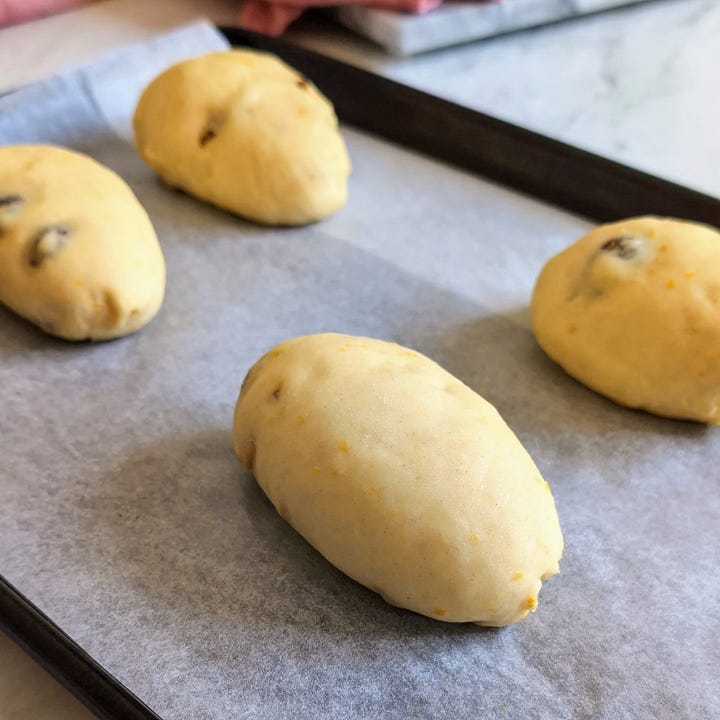

If your bread shaping skills are still developing like mine, don’t be disheartened by any shape oddities. If these photos show you nothing else, it’s that whatever shape your buns decide to take, once they are sliced and filled, you will have long forgotten about any slightly odd shapes.
This recipe makes eight buns and is inspired not only by my unforgettable experience in Rome on Saturday, 10 August 2024, but also the writing and recipes by Emiko Davies, Giuseppe dell’Anno, Nicola Lamb, and Emelia Jackson.
Ingredients
Pre-ferment
50g warm water
2 teaspoons caster sugar
7g / 1 teaspoon of instant yeast
50g plain flour
Dough
230-280g plain flour
1 egg, room temperature and lightly whisked
50ml full-fat milk
40g caster sugar
1 teaspoon salt
50g unsalted butter, melted and cooled
Zest of 1 orange
Zest of 1 lemon
Optional extras:
50g sultanas, soaked in orange juice from the zested orange above
2-3 teaspoons pine nuts
Glaze (optional)
100g icing sugar
20g full-fat milk
½ teaspoon vanilla bean paste/extract
Cream filling
250ml thickened cream
2-3 teaspoons icing sugar
1 teaspoon vanilla bean paste/extract
Zest of 1 orange
Method
The day before baking, place all the ingredients for the pre-ferment in a medium bowl and use a spatula to mix into a sticky paste. Once combined, scrape down the sides of the bowl, making sure all the mixture is gathered in a single blob. Cover with plastic wrap and set aside in a warm spot for 30-60 minutes, or until the mixture has grown about three times its original size and is all bubbly and foamy.
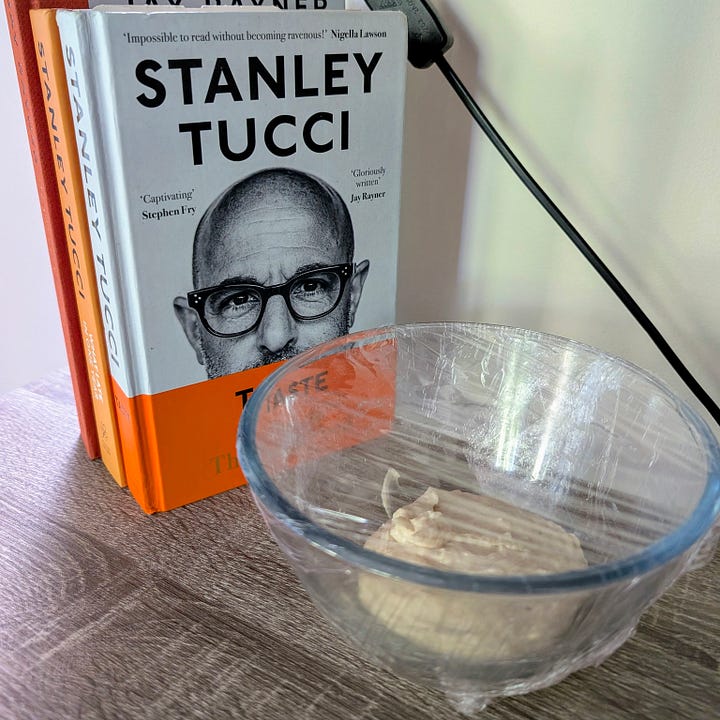
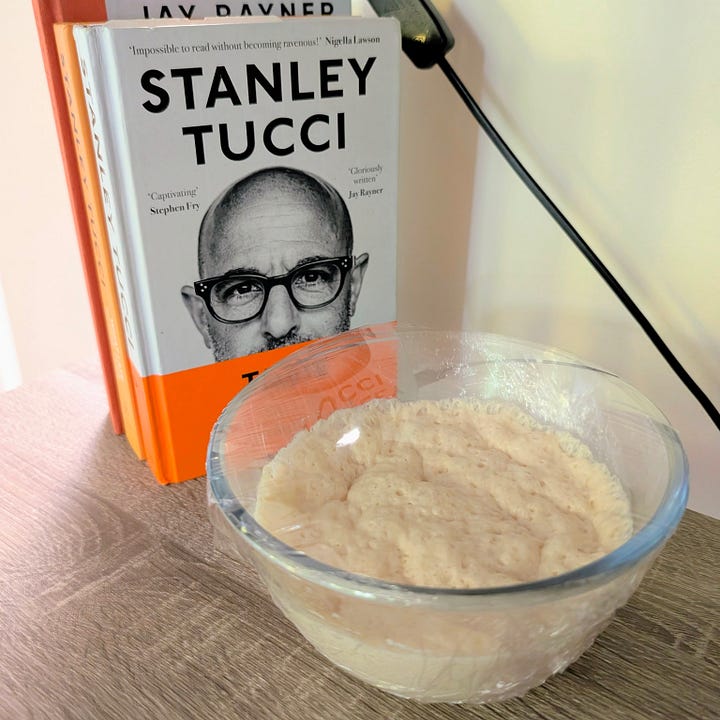
When it comes to preparing the dough, you have an important choice to make – mix and knead by hand, or use a stand mixer with a dough hook attached. The method that follows describes the manual method, but the same visual and textural cues apply for those using a mixer.
Start the dough by adding 230g of the flour, egg, milk, caster sugar, salt, melted butter, and citrus zests into a large bowl. Add the bubbly pre-ferment and use a spatula or wooden spoon to bring the dough together. If the dough is still very wet and sticky, gradually add in the reserved flour until it forms a coherent, yet slightly sticky dough. Tip the dough onto a lightly floured bench and knead for 10-15 minutes, adding more flour as required, until the dough is stretchy, glossy, and still slightly sticky.
Shape the dough into a tight ball and place it in a medium bowl that has been lightly greased with oil or butter. Cover the bowl with a shower cap or plastic wrap and leave to prove on the bench for about 45 minutes. Then place the bowl in the fridge to proof overnight.
The next day, have a peek at your dough in the fridge and admire the magic of the overnight proof. All going well, your dough will have quietly grown into a ball about the size of a large cantaloupe or a small watermelon.
If you’re using the extra dough fillings, prepare these before you take the dough out of the fridge. Soak the sultanas in the juice of your zested orange for at least an hour before you’re ready to start preparing the dough. Place the pine nuts in a petit bowl for easy access. Consider making yourself a coffee and calling your Mum while the sultanas soak.
When you’re ready to prepare the dough, gently tease it out of the bowl onto a lightly floured bench. Punch the air out of the dough and flatten it evenly with a rolling pin.
If you’re using the extra dough fillings, here are a few extra steps for you. (If not, skip ahead!) Continue rolling the dough until it’s about 1cm thick. Drain the sultanas and sprinkle them, along with the pine nuts, evenly over the dough (image 1). Gently press them into the dough.
From the end closest to you, roll the dough into a long spiral and then use your rolling pin to press down and flatten the spiral (image 2). Your dough will now be a very long, skinny rectangle. Starting at one of the short ends, roll the dough into another spiral. Once again, use your rolling pin to gently press and roll the dough down into a rectangle that is roughly 11cm x 18cm, and 3cm thick (image 3).
Cut your dough into eight even portions. Working with one portion at a time, flatten into a disc.
If your dough has the fillings inside, flatten the dough with the outside skin facing down, cut side up. This will help lock-in any fillings that may be trying to escape.
Roll up the disc into a spiral cigar shape and taper the ends. With the bun’s seam facing up, use your thumb and index finger to stitch the seam together by pinching the dough from one end to the other. Make any final tweaks to the shape of your bun, and then place it on your lined baking tray with the stitched seam facing down. Repeat this with the remaining seven portions of dough.
Cover the trays with a clean tea towel and leave to proof for an hour, or until doubled in size. Preheat your oven to 180 degrees C. When your buns are proofed, lightly whisk the egg for the egg wash and brush the first tray of buns. Bake for 15-17 minutes, or until golden brown. Repeat with the second tray.
When all the buns are baked, prepare the glaze by whisking the icing sugar, milk, and vanilla together in a small saucepan. Place the saucepan on a low heat, and using a digital thermometer, heat the glaze to about 50 degrees C, stirring continuously. Brush each bun with the glaze and leave to cool completely.
When the buns are cool, the glaze is set and you’re ready to serve, prepare the cream filling by whipping the cream, icing sugar, and vanilla to medium/still peaks. Add the orange zest and gently whisk to evenly distribute.
To assemble, slice a bun longways three-quarters of the way through, leaving the bottom join intact, like you would with a hot dog bun. Gently prize open the bun and spoon in 2-3 heaped teaspoons of cream into the bun. Eat immediately.
These buns are best eaten on the day they’re baked. However, if you do have any left over, be sure not to cut them open. Store them in an airtight container in the fridge for up to two days. Store any leftover cream in a seperate container in the fridge. Only slice and fill your buns with cream when you are ready to serve.
Bakeology podcast update
If you’ve gotten this far, thanks for reading! If you also happen to listen to my Bakeology podcast, I wanted to give a quick update on the next season.
As much as I’d love to have Hermione Granger’s Time-Turner from The Prisoner of Azkaban, or somehow get by on three hours of sleep, the realities of life make this dream rather challenging. So in an attempt to strike a sustainable balance between my sweet baking world, my day job, and most importantly, being present and living life with those closest to me, Bakeology will return in October 2025, rather than this February.
To make sure I don’t collapse like an over-proofed loaf of bread, I’ll instead focus on my writing and recipe development here on Substack, and will spread out the recording of Bakeology episodes over the year, with a triumphant return in the form of Season 4 towards the end of the year.
I’m so enjoying sharing these recipes and stories with you and am excited to keep the sweetness coming your way for a long time to come.
I can’t thank you enough for coming along on the sweet adventure, whether you read, listen, or bake along with me, your support means the world.
Stay sweet
Adam x





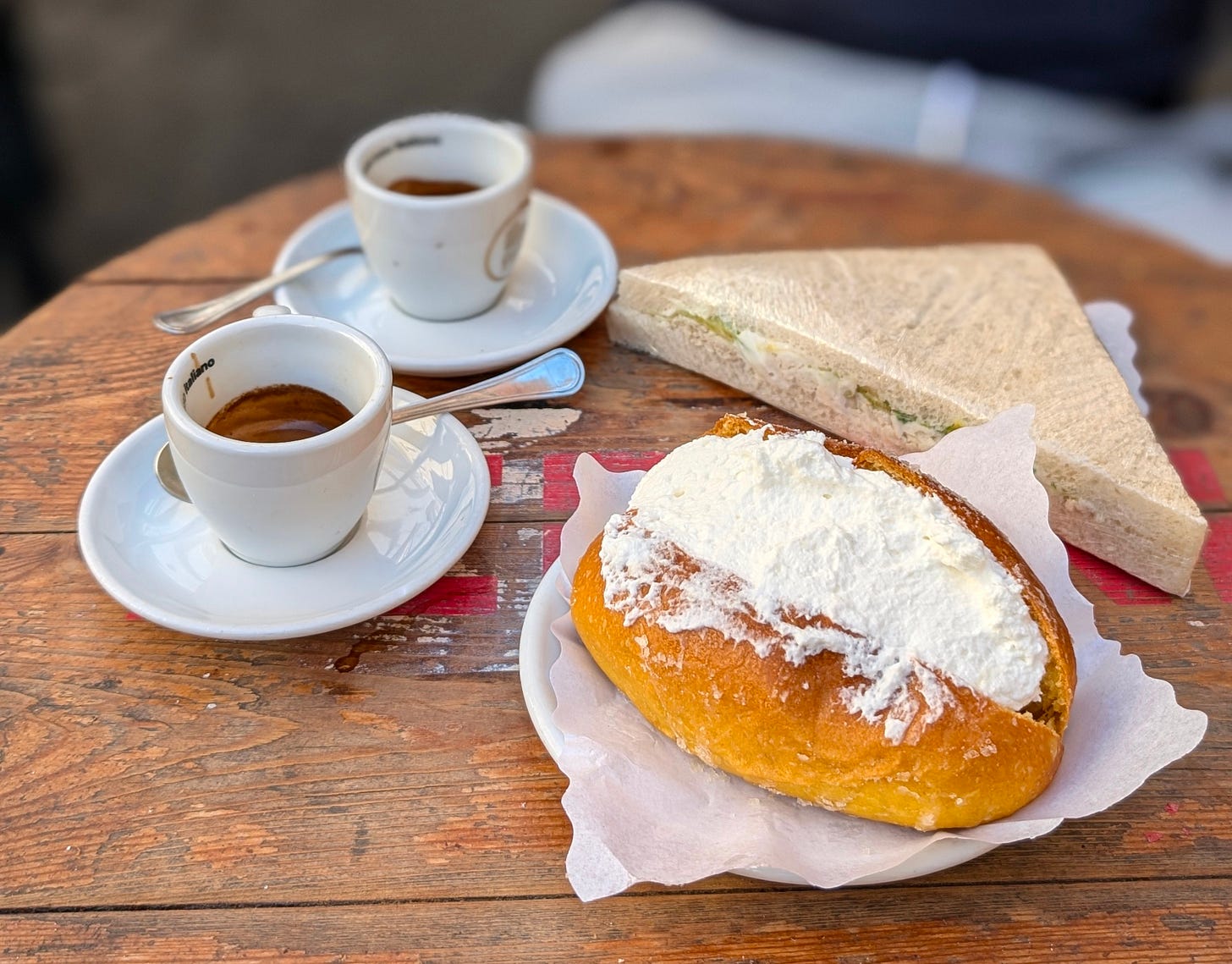
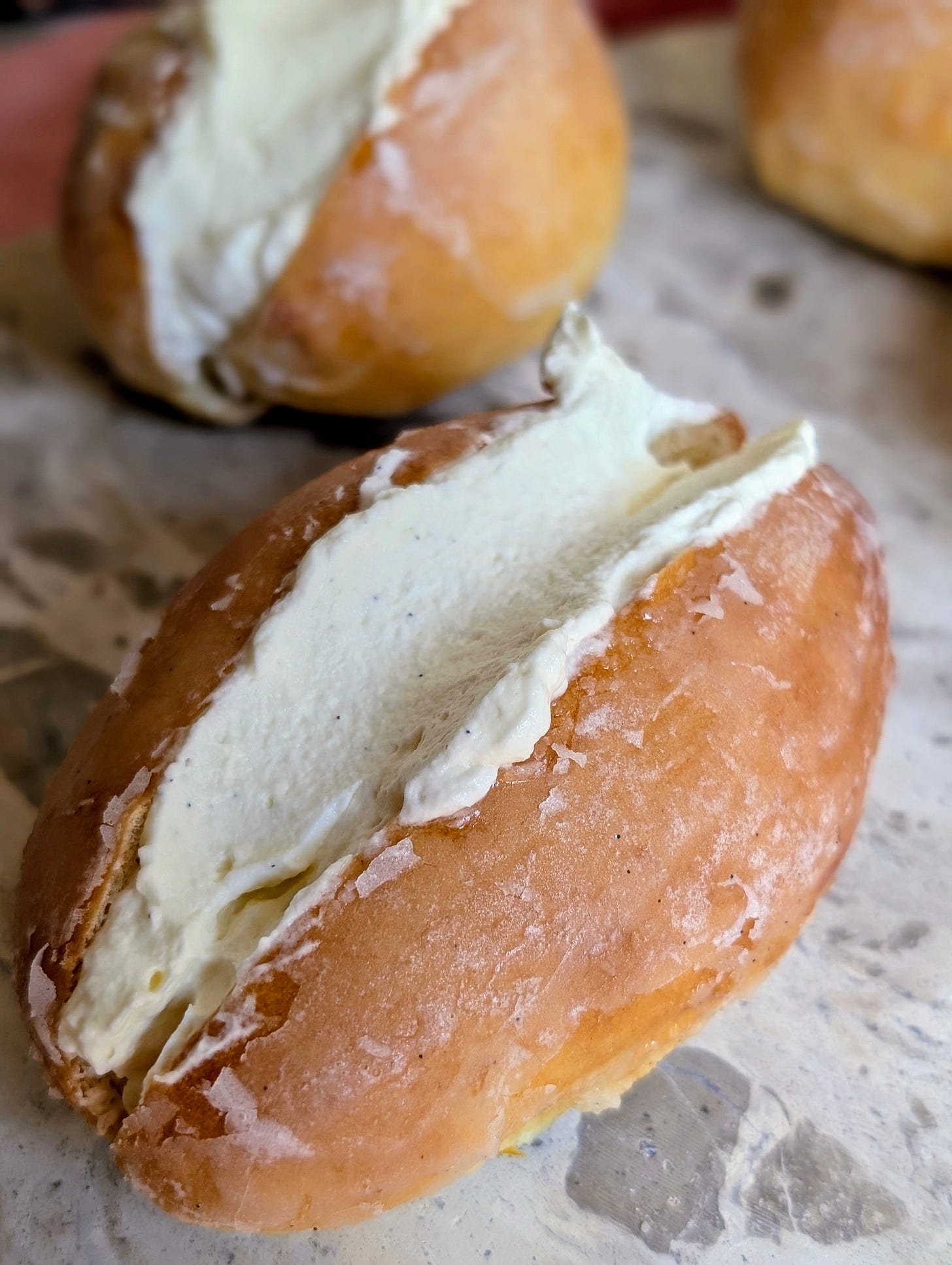
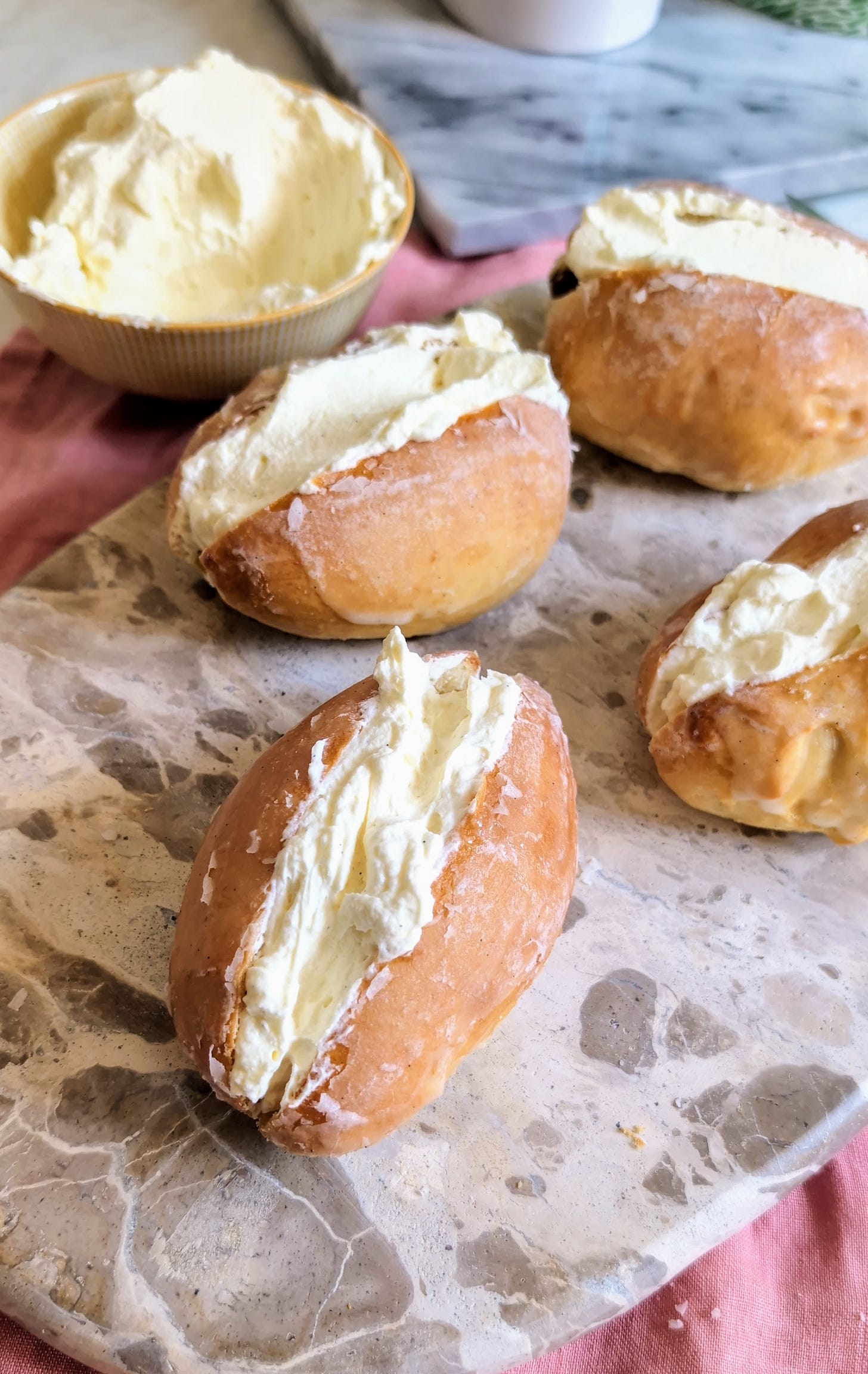
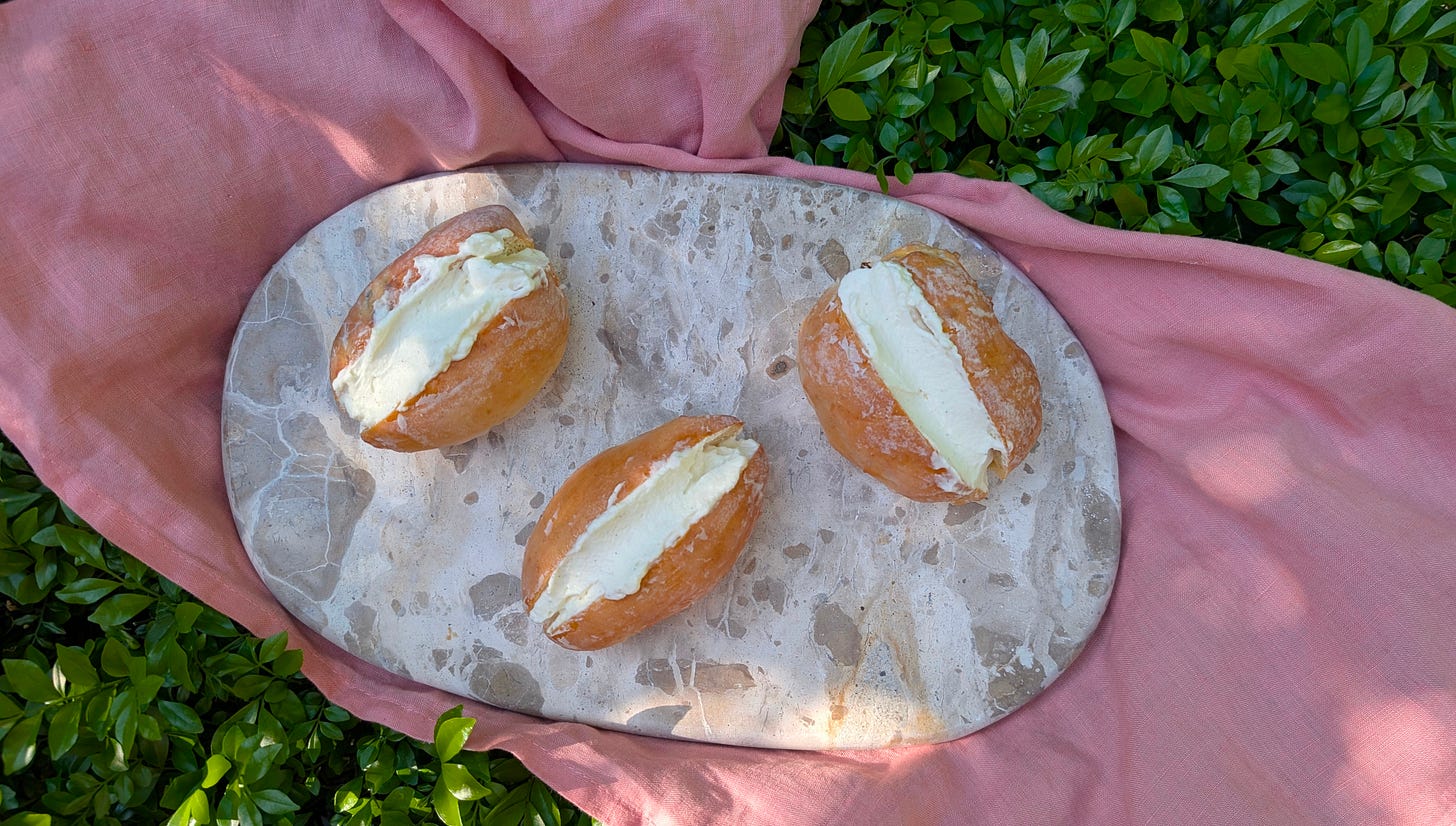

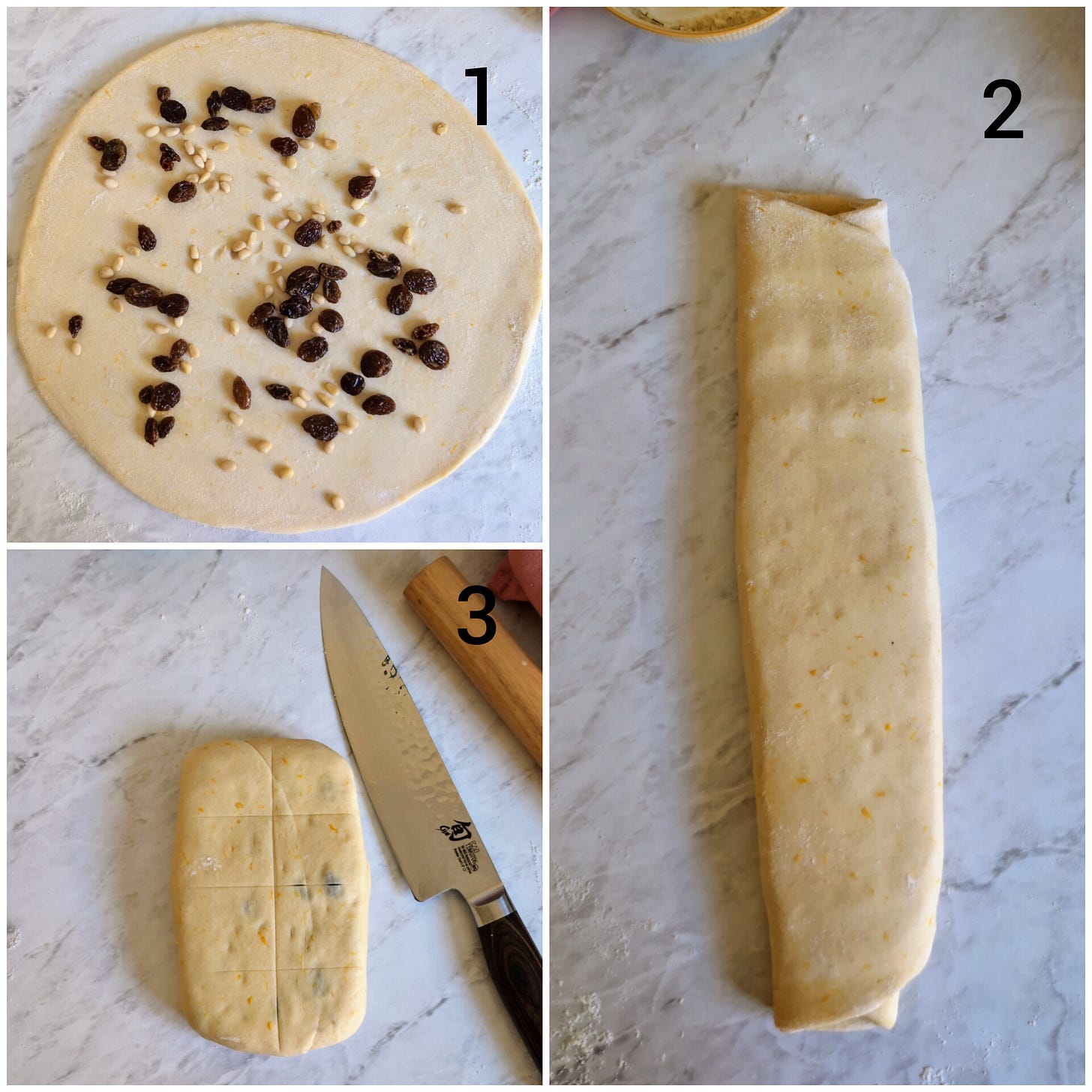
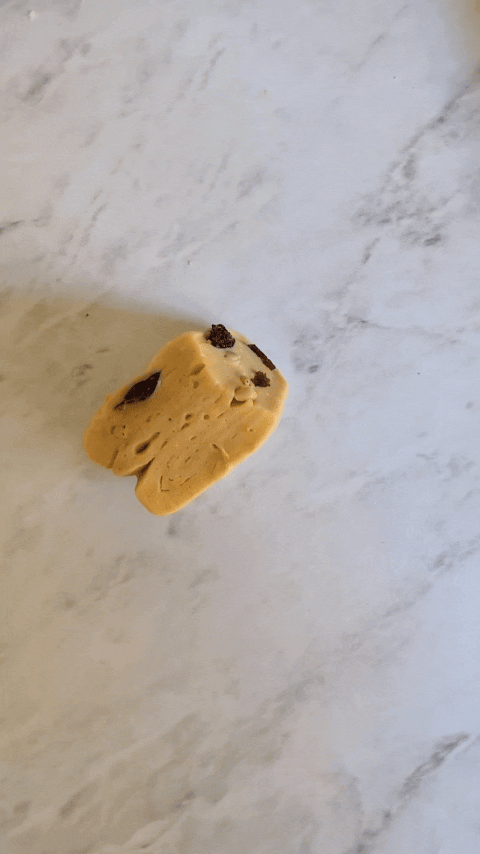


Thank you for taking us to Rome Adam x
Thank you for taking me to Italy and sharing this revelation ..... the question is, am I brave enough to try crafting the maritozzo? ❤️🤍💚